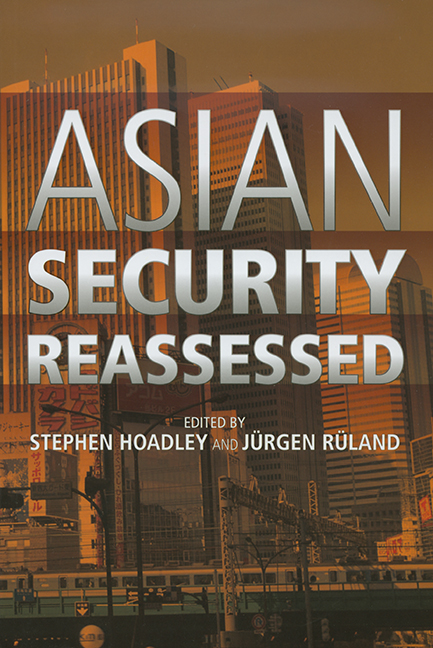Book contents
- Frontmatter
- Contents
- Acknowledgements
- About the Contributors
- List of Abbreviations
- Preface
- Part One Approaches to Asian Security
- 1 The Evolution of Security Thinking: An Overview
- Part Two Security Management by Asian States and Regional Institutions
- Part Three Non-Traditional Challenges to Asian Security
- Part Four New Concepts of Asian Security
- Index
1 - The Evolution of Security Thinking: An Overview
from Part One - Approaches to Asian Security
Published online by Cambridge University Press: 21 October 2015
- Frontmatter
- Contents
- Acknowledgements
- About the Contributors
- List of Abbreviations
- Preface
- Part One Approaches to Asian Security
- 1 The Evolution of Security Thinking: An Overview
- Part Two Security Management by Asian States and Regional Institutions
- Part Three Non-Traditional Challenges to Asian Security
- Part Four New Concepts of Asian Security
- Index
Summary
INTRODUCTION
Few topics can be more important to more people than security, not least in Asia. Unfortunately for those who live there, Asia has been one of the world's most belligerent regions since the end of World War II. Of the approximately two hundred armed conflicts registered between 1945 and the present, nearly one-third took place in Asia. Two of the deadliest among them were fought in Asia. More than three million people died in the Korean War (1950–53) and over two million in the Vietnam War (1965–73). The Indochina death toll would reach three million if we add the victims of the first Indochina War (1946–54) and the Cambodian conflict (1979–91). Great power rivalry, arms races, communist insurgencies, ethnic rebellions, genocide, massive refugee flows, widespread human rights violations, terrorism, banditry and piracy have added to the apprehensions over Asia's security.
The end of the Cold War has not defused many of these conflicts in Asia as it has those in other parts of the world such as Europe. Even worse, new threats have emerged to frustrate the efforts of Asian governments and international organizations to create a peaceful security environment in the region. The nature of these threats has been aptly summarized by the 2001 Quadrennial Defense Reviewof the United States Department of Defense. The report describes Asia as a region containing:
a volatile mix of rising and declining regional powers. The governments of some of these states are vulnerable to overthrow by radical or extremist internal political forces. Many of these states field large militaries and possess the potential to develop or acquire weapons of mass destruction.
In a globalized world the consequences of these conflicts may easily spill over into other world regions. Asia's security problems have thus become a prime focus for study by policymakers, scholars of international relations and the media, both inside and outside the region. This volume contributes to this policy-relevant study. It seeks to assess the changes in the Asian security environment since the end of the Cold War and the shifts in the perceptions and strategies of managing the threats in the region.
- Type
- Chapter
- Information
- Asian Security Reassessed , pp. 3 - 34Publisher: ISEAS–Yusof Ishak InstitutePrint publication year: 2006



